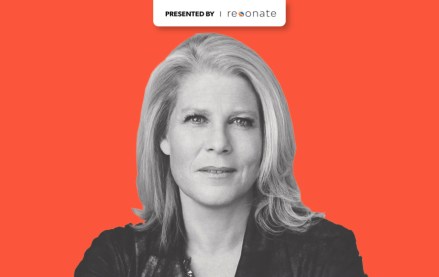Why advertisers are leaning into digital publishing strategies

Ashley Deibert, CMO, Piano
The world of digital advertising is undergoing a paradigm shift.
Even before Google pulls the final plug on third-party cookies in 2022, brands will be challenged to rethink their targeting and ad strategies. The demise of third-party cookies promises to accelerate the decline of third-party data, and brands will require more direct data solutions to ensure return on investment and maximize the impact of their advertising spend.
Enter first-party and zero-party data — fully consented data types that users provide directly to brands, often through their on-site actions. First-party and zero-party data have always been part of most brands’ advertising efforts, but they’re about to play a starring role as the foundation of their entire strategy.
While change is always difficult, it’s not necessarily a bad thing. First- and zero-party are more reliable than third-party data. And, since the data is provided by people who really want to interact with the brand, it’s a more reliable way to interact with individuals who are receptive to advertising and likely to become customers. Moreover, since both first- and zero-party data are provided voluntarily, they’re built on a foundation of privacy and consent that users and lawmakers increasingly demand. But to be successful, most brands will need to expand their stores of each data type.
The state of direct brand engagement
In July and August, 2020, Digiday surveyed 111 advertisers, representing 71 different brands and 40 agencies, to understand what brands were doing to prepare for a cookieless world. This research offers a snapshot of an advertising industry that is dramatically increasing its reliance on first- and zero-party data as a direct result of cookie deprecation.
The study revealed that 50 percent of marketers expect to be more reliant on first-party data in the coming year, and 49 percent will use more zero-party data. And they plan to draw on a familiar set direct engagement tactics to do so — those that have been honed by successful digital publishers.
The question is, are they making this transition quickly enough to be ready for 2022?
Direct brand engagement is emerging as a key strategy
Publishers have long understood that direct engagement is the key to increasing user investment. The more engaged in a brand’s site a user proves, the more often they’ll visit. And it’s these highly engaged users who are most likely to convert into paying subscribers, sign up for newsletters or share data on a registration page. But first, they need to see value in those exchanges, whether through access to premium content, expanded site features or some other tangible benefit.
Creating value exchanges to inspire users to become more invested in the site has enabled publishers to collect both first and zero-party data. In turn, they’ve been able to further personalize their user experiences, directly engage with their audience and provide critical data points to their advertisers to help them better target ads.
The survey results show that most brands are now embracing many of the tactics that digital publishers use to collect this crucial data. Email, already a powerful tool for brands, has become their medium of choice for new approaches. The study found that 55 percent are using surveys and questionnaires to gather customer data, and 50 percent are employing newsletter sign-ups. However, they’re also exploring subscription offers (used by 29 percent of respondents), registrations (28 percent) and gated access to site features (20 percent). When asked what they’ll be using a year from now, subscription offerings increase by 30 percent and registrations by 17 percent.
How they’re using all this data is equally notable. While direct ad targeting and broader segmentation continue to top the list of widely used data-driven tactics, 37 percent of those surveyed also plan to engage in direct one-to-one interactions with their customers.
Waiting for change will leave some brands behind the curve
The results show that brands are seeking out new tactics in the face of change. However, they also suggest that brands are moving slowly when it comes to making the big shift away from third-party data. They’re comfortable taking a wait-and-see approach, convinced they’ll have plenty of time to adapt away from their third-party data strategies when the time comes.
Among the survey respondents, 44 percent plan to start their post-third-party cookie planning in two years or less, putting them on the cusp of Google’s 2022 timeline. Meanwhile, 44 percent expect the transition to take up to three years — meaning they’re at risk of missing the deadline completely. And 78 percent don’t see any reason to hurry, assuming that they’ll be able to adapt to other data types quickly and easily at a later date.
In truth, late adopters are behind the curve from a strategic perspective. Experts, including multiple members of the World Wide Web Consortium (W3), have noted that advertisers, ad tech companies, browsers and publishers are simply taking too long to prepare for the end of third-party cookies. Much like the sluggish response to GDPR, this leisurely approach risks putting many businesses in the hot seat at a moment when they’re ill-equipped to swiftly adapt.
There’s no reason to wait. By virtue of being more clearly sourced, first- and zero-party data is actually a better alternative than third-party data, opening up the ability to target users more precisely. Still, there is a learning curve to building a strategy that revolves around direct engagement. Of those surveyed, 52 percent reported that the difficulty of creating content that appeals to their audience was a roadblock to improving direct engagement. Getting a head start now will give brands the time to test what works for their audiences, and what doesn’t.
Digital publishers have spent decades perfecting the tactics they use to build direct engagement. Brands have less than two years to do the same.
More from Digiday

With a new ‘answer engine,’ Brave browser adds another generative AI tool for search
The privacy focused browser’s new tool is the latest to offer a synthesized summary for queries using its independent index.

NBA CMO Henault: How the league added music and fashion to its bench strength
Henault cited the intersection of sports and culture that the professsional basketball league has cultivated as a means to growing its global fan base.

‘Beginning to be the practical’: GE global CMO Linda Boff on the evolution of AI in marketing
Boff pointed to market research as an area where AI is beginning to have an impact, in a good way, on an industry feature that has lingered in the traditional.





